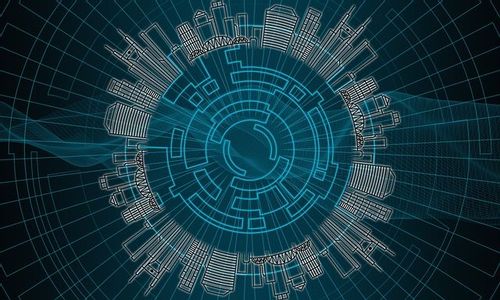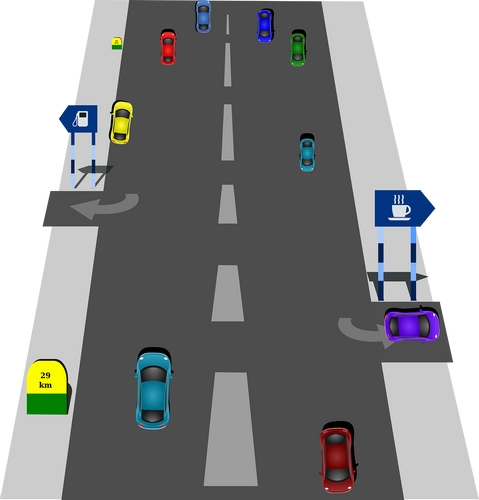Standards Packages
iTeh together with SIST has developed and compiled a comprehensive collection of standard packages to support your standard requirements. Our packages cover an array of content that includes quality management, risk management, road vehicles, machine safety, and much more. With over 200 packages to choose from, you are sure to find a collection to suit your standard needs.
Latest Standards
This document specifies requirements intended to ensure the safety and health of people when they use caravans for temporary or seasonal habitation.
It also specifies the corresponding test methods.
Requirements applicable to road safety are not included in the scope of this document.
This document is applicable exclusively to rigid and rigid folding caravans as defined in EN 13878.
- Standard52 pagesEnglish languagesale 10% offe-Library read for1 day
This document specifies the requirements for the ordering, manufacture, testing, inspection and delivery of steel and heat-resisting alloy tubes. It is presupposed to be applied when referred to and in conjunction with the EN material standard unless otherwise specified on the drawing, order or inspection schedule.
- Standard32 pagesEnglish languagesale 10% offe-Library read for1 day
IEC 61800-9-2:2023 specifies energy efficiency indicators of power electronics (complete drive modules (CDM), input or output sub drive modules (SDM), power drive systems (PDS) and motor starters, all used for motor driven equipment.
It defines IE and IES classes, their limit values and provides test procedures for the classification of the overall losses of the motor system.
Furthermore, this document proposes a methodology for the implementation of the best energy efficiency solution of drive systems. This depends on the architecture of the motor driven system, on the speed/torque profile and on the operating points over time of the driven load equipment. It provides a link for the energy efficiency evaluation and classification of the extended product.
This edition includes the following significant technical changes with respect to the previous edition:
a) Additional IES Classes defined to IES5;
b) Removed reference motor loss data and now point to IEC 60034-30-2;
c) Expanded and modified factors in Clause 6 for CDMs;
d) Annex C is now the Mathematical Model for CDM Losses;
e) Moved the mathematical model for the CDM to Annex C;
f) Added Sub Drive Input Module and Sub Drive Output Modules to Annex B;
g) Annex D is now the Converter Topology (old Annex C);
h) Annex E is now the Interpolation of Motor Losses (Old Annex D);
i) Annex E expanded to include various motor connections and updated interpolation method;
j) New Annex E for determination of Interpolation Coefficients;
k) Annex F is the old Annex E;
l) New Annex J Explanation of Correction Factors for the Reference Losses in Table 8.
- Standard268 pagesEnglish languagesale 15% off
- Standard276 pagesEnglish and French languagesale 15% off
This document specifies the requirements of parameters for the physical and the link layer for systems using radio to remotely read meters. The primary focus is to use the Short Range Device (SRD) unlicensed bands. This document encompasses systems for walk-by, drive-by and fixed installations. As a broad definition, this document can be applied to various Application Layers.
- Standard104 pagesEnglish languagesale 10% offe-Library read for1 day
This document specifies the requirements for the ordering, manufacture, testing, inspection and delivery of steel and heat-resisting alloy bars and sections. It is presupposed to be applied when referred to and in conjunction with the EN material standard unless otherwise specified on the drawing, order or inspection schedule.
- Standard37 pagesEnglish languagesale 10% offe-Library read for1 day
This document establishes a classification of surface insulations for electrical steel sheet, strip and laminations according to their general composition, relative insulating ability and function.
These surface insulations are either oxide layers or applied coatings.
The purpose of this classification is to create a nomenclature for the various types of surface insulations and to assist users of surface insulations by providing general information about the chemical nature and use of the surface insulations.
It is not the intent of this classification to specify insulation requirements in terms of specific values of surface insulation resistance. Such requirements are to be agreed between the purchaser and the steel producer, where applicable.
The classification is to be used in conjunction with the various specifications for cold rolled electrical steels (see Clause 2).
- Standard8 pagesEnglish languagesale 10% offe-Library read for1 day
IEC 62541-23:2025 defines ReferenceTypes commonly used in industrial Information Models. They are more specific than the ReferenceTypes in IEC 62541‑3 which are an inherent part of the OPC UA Address Space Model.
- Standard24 pagesEnglish languagesale 15% off
- Standard25 pagesFrench languagesale 15% off
- Standard49 pagesEnglish and French languagesale 15% off
IEC 62541-6:2025 specifies the mapping between the security model described in IEC 62541‑2, the abstract service definitions specified in IEC 62541‑4, the data structures defined in IEC 62541‑5 and the physical network protocols that can be used to implement the OPC UA specification.
This fourth edition cancels and replaces the third edition published in 2020. This edition constitutes a technical revision.
This edition includes the following significant technical changes with respect to the previous edition:
a) addition of support for ECC to UA Secure Conversation;
b) use of the AuthorityKeyIdentifier extension in Certificate Revocation Lists;
c) enhancement of JSON mapping of Unions;
d) addition of Decimal data type encoding.
e) description of ECC keyUsage rules;
f) addition of Media assigned by IANA to UANodeSet definition;
g) addition of requirements for user and issuer Certificates;
h) addition of rules which specify what happens when DateTime precision is lost;
i) addition of rules to allow for the truncation of strings containing embedded nulls.
J) definition of a normative string representation for NodeId, ExpandedNodeId and QualifiedName for JSON mapping.
k) requirement that TAI times be converted to UTC;
l) new possibility to omit Symbol if unknown in JSON encoding;
m) addition of fields needed to support RolePermissions to the UANodeSet
- Standard138 pagesEnglish languagesale 15% off
- Standard150 pagesFrench languagesale 15% off
- Standard288 pagesEnglish and French languagesale 15% off
IEC TS 63283-2: 2025 has the goal of analyzing the impact of smart manufacturing on the daily operation of an industrial facility. It focusses on the perspective of automation and control of the production system, but also on the supporting processes of ordering, supply chain management, design, engineering and commissioning, operational technology, life cycle management, maintenance management, and resource management.
These recommendations are accomplished on the basis of several carefully selected use cases that are familiar to manufacturing industry. Therefore, each use case is described, followed by an analysis of the possible influence of smart manufacturing and the assessment of the impact on existing and future standardization.
This first edition cancels and replaces the first edition of IEC TR 63283-2 published in 2022. This edition constitutes a technical revision.
This edition includes the following significant technical changes with respect to the previous edition:
a) additional use cases (Clause 6);
b) clustering of the requirements for standardization (Clause 7);
c) consolidation of the use cases contributing to the cluster “Computing infrastructure” (Clause 8 and Annex D);
d) consolidation of the business context of the use cases (Annex C).
- Technical specification204 pagesEnglish languagesale 15% off
IEC 60966-4-4:2025, which is a Detail Specification, relates to multi-channel semi-rigid cable assemblies composed of type 50-5 semi-rigid coaxial cables with foamed polyethylene dielectric (see Annex A) and connectors such as type 7-16 (IEC 61169-4), type 4.1-9.5 (IEC 61169-11), type N (IEC 61169-16), type S7-16 (IEC 61169-53), type 4.3-10 (IEC 61169-54), type L32 (IEC 63138-4), type 2.2-5 (IEC 61169-66), type NEX10 (IEC 61169-71), type MQ4 (IEC 63138-2) or type MQ5 (IEC 63138-3). It gives subfamily detail requirements and severities.
This document applies to the semi-rigid cable assemblies for mobile communication, in particular for the cable assemblies used between main feeder and antennas or between main feeder and equipment system or between remote radio heads and antennas. The operating frequency is up to 6 000 MHz.
- Standard14 pagesEnglish languagesale 15% off
- Standard14 pagesFrench languagesale 15% off
- Standard28 pagesEnglish and French languagesale 15% off
IEC 62541-22:2025 specifies an OPC UA Information Model for a basic set of network related components used in other Information Models.
The initial version of this document defines parameter sets for TSN Talkers and Listeners as well as network interfaces and ports as shown in Figure 1. A future version of this document is expected to have a broader scope of other network technologies than Ethernet only.
- Standard39 pagesEnglish languagesale 15% off
- Standard39 pagesFrench languagesale 15% off
- Standard78 pagesEnglish and French languagesale 15% off
IEC TS 62271-5:2024 applies to DC switchgear and controlgear designed for operation on HVDC transmission systems having direct voltages of 100 kV and above. This document applies to all high-voltage switchgear and controlgear for indoor and/or outdoor installation except as otherwise specified in the relevant IEC documents for the particular type of switchgear and controlgear.
- Technical specification146 pagesEnglish languagesale 10% offe-Library read for1 day
This document is a part of a package of standards: EN 12080, EN 12081, EN 12082-1 and EN 12082-2.
This document specifies the principles and methods for a rig performance test of the system of axlebox rolling bearing(s), housing, seal(s) and grease, required for reliable operation of trains on European networks. The necessary type and extent of testing are specified by the deployment procedure specified in EN 12082-2, with respect to design requirements on the axlebox and its components.
This document covers a rig performance test, principles for a field test and a possible example for a water tightness test. Test parameters and minimum performance requirements for vehicles in operation on main lines are specified. Different test parameters and performance requirements may be selected for vehicles in operation on other networks (e.g. urban rail).
This document is historically developed for outboard applications with rotating inner rings, but can be used for vehicles with inboard bearing arrangements with rotating inner rings.
It gives some possible examples where a sequenced rig performance test addresses the broad range of different service conditions within a specific application or vehicle platform.
- Standard43 pagesEnglish languagesale 10% offe-Library read for1 day
This document specifies the requirements for the ordering, manufacture, testing, inspection and delivery of steel and heat resisting alloy remelting stock. It is presupposed to be applied when referred to and in conjunction with the EN material standard unless otherwise specified on the drawing, order or inspection schedule.
- Standard26 pagesEnglish languagesale 10% offe-Library read for1 day
This document is a part of a package of standards: EN 12080, EN 12081, EN 12082-1 and EN 12082-2.
This document specifies the principles and methods for deployment of the system of axlebox rolling bearing(s), housing, seal(s) and grease, required for reliable operation of trains on European networks.
It covers the conformity assessment with respect to design requirements on the rolling bearing(s) according EN 12080 and grease according EN 12081 as well as the performance of (rig) tests according to EN 12082-1. This document is historically developed for outboard applications with rotating inner rings, but can be used for vehicles with inboard bearing arrangements with rotation inner rings.
The present document describes the complete deployment procedure for new axleboxes and it specifies the necessary type and extent of testing. For certain cases and based on a documented risk assessment, a reduced deployment procedure is described.
This document only applies to axleboxes equipped with rolling bearings and greases according to EN 12080 and EN 12081.
It is not within the scope of EN 12082-2 to specify the technical details of the testing procedures, these are covered by EN 12082-1.
It is not within the scope of EN 12082-2 to define the validation procedure of box housings, sleeves or coves from a structural point of view. The relevance of these parts in the scope of this document is limited to the interaction with the axle box rolling bearing with respect to the required service.
- Standard18 pagesEnglish languagesale 10% offe-Library read for1 day
IEC 62541-8:2025 defines the information model associated with Data Access (DA). It particularly includes additional VariableTypes and complementary descriptions of the NodeClasses and Attributes needed for Data Access, additional Properties, and other information and behaviour.
The complete address space model, including all NodeClasses and Attributes is specified in IEC 62541‑3. The services to detect and access data are specified in IEC 62541‑4.
Annex A specifies how the information received from OPC COM Data Access (DA) Servers is mapped to the Data Access model.
This fourth edition cancels and replaces the third edition published in 2020. This edition constitutes a technical revision.
This edition includes the following significant technical changes with respect to the previous edition:
a) addition of a "Quantity Model" which can be referenced from EngineeringUnit Properties. The model defines quantities and assigned units. In addition it provides alternative units and the conversion to them.
b) addition of rules for ValuePrecision Property:
- can also be used for other subtypes like Duration and Decimal.
- rules have been added when ValuePrecision has negative values.
- Standard92 pagesEnglish languagesale 15% off
- Standard94 pagesFrench languagesale 15% off
- Standard186 pagesEnglish and French languagesale 15% off
IEC 60749-26:2025 establishes the procedure for testing, evaluating, and classifying components and microcircuits in accordance with their susceptibility (sensitivity) to damage or degradation by exposure to a defined human body model (HBM) electrostatic discharge (ESD). The purpose of this document is to establish a test method that will replicate HBM failures and provide reliable, repeatable HBM ESD test results from tester to tester, regardless of component type. Repeatable data will allow accurate classifications and comparisons of HBM ESD sensitivity levels. ESD testing of semiconductor devices is selected from this test method, the machine model (MM) test method (see IEC 60749‑27) or other ESD test methods in the IEC 60749 series. Unless otherwise specified, this test method is the one selected.
This edition includes the following significant technical changes with respect to the previous edition:
a) new definitions have been added;
b) text has been added to clarify the designation of and allowances resulting from “low parasitics”. The new designation includes the maximum number of pins of a device that can pass the test procedure.
- Standard50 pagesEnglish languagesale 15% off
- Standard55 pagesFrench languagesale 15% off
- Standard105 pagesEnglish and French languagesale 15% off
- Standard4 pagesEnglish languagesale 15% off
- Standard4 pagesFrench languagesale 15% off
- Standard8 pagesEnglish and French languagesale 15% off
IEC 62541-11: 2025 defines the Information Model associated with Historical Access (HA). It particularly includes additional and complementary descriptions of the NodeClasses and Attributes needed for Historical Access, additional standard Properties, and other information and behaviour. The complete AddressSpace Model including all NodeClasses and Attributes is specified in IEC 62541‑3. The predefined Information Model is defined in IEC 62541‑5. The Services to detect and access historical data and events, and description of the ExtensibleParameter types are specified in IEC 62541‑4. This document includes functionality to compute and return Aggregates like minimum, maximum, average etc. The Information Model and the concrete working of Aggregates are defined in IEC 62541‑13. Conventions for Historical Access Clients are informatively provided in Annex A.
This fourth edition cancels and replaces the third edition published in 2020. This edition constitutes a technical revision.
This edition includes the following significant technical changes with respect to the previous edition:
a) a functionality has been added to support retrieving of modified events;
b) an Event has been added to indicate when a backfill occurred;
c) a new ReferenceType that can be used to indicate an external node has been defined;
d) the text has been improved to better explain the concept of annotation and remove conflicting explanations;
e) a default historian configuration (and where to find it) has been defined;
f) HistoricalEventConfigurationType, which provides general configuration information about the historical Event storage, has been added;
g) the text has been updated and optional fields have been added to HA configuration object to allow configuration to be defined for periodic data collection, not just for exception-based collection;
h) an ObjectType that can be used for external event collection has been provided as well as an example how historians can be configured.
- Standard229 pagesEnglish languagesale 15% off
This part of IEC 62271 provides guidance to suppliers, manufacturers, users, and waste operators of high-voltage switchgear and controlgear as well as their assemblies having a rated voltage above 1 kV AC and 1,5 kV DC, together with their associated auxiliary equipment, on environmentally conscious design, and on assessing environmental impacts when used in systems. This document also gives guidance on effective communication of environmental information throughout the entire life cycle.
This document provides guidance on the process and general aspects to select UN sustainable development goals (UN sustainable development goals (SDG)), especially those dealing with health and environmental impacts and their assessments, represented respectively by:
• SDG 3-Good Health and Well-being;
• SDG 6-Clean Water and Sanitation;
• SDG 7-Affordable and Clean Energy;
• SDG 12-Responsible Consumption and Production;
• SDG 13-Climate Action;
• SDG 14-Life Below Water;
• SDG 15-Life on Land.
This document gives guidance on the process and general aspects to implement environmentally conscious product design (ECD) principles, as given in IEC 62430, essential
for high-voltage electrical power equipment and power control equipment.
This document gives guidance on executing the life cycle assessment (LCA) based on product category rules (PCR) in accordance with IEC 63366, ISO 14040 and ISO 14044 and on applying the Type III environmental declaration in accordance with ISO 14025, both for high-voltage switchgear and controlgear. This guidance provides standardized product specific rules (PSR) summarized as follows:
1) Common rules for the LCA process describing functional units, system boundaries, life cycle inventory analysis, scenarios, environmental impact categories;
2) Common rules for communicating information about the presence of regulated substances and the materials contained in the product, according to IEC 62474;
3) Common rules for communicating information about the end-of-life treatment of the product including material efficiency.
This document does not address the environmental declaration programme, however it can be used by program operators.
This document focuses on describing the LCA process referring to the functional unit, system boundary, scenarios, etc.
Owing to variability of influencing factors, such as flows, allocations, not balanced and timestable energy mix under different programmes, equipment customization, durability related to environmental conditions, it is not possible to compare two similar high-voltage switchgear and controlgear analysed in different contexts.
This document does not address by-products from arcing which are generated in sufficiently small quantities such that their environmental impact can be neglected. Any by-product generated by arcing during the use of equipment is strongly dependent on operating conditions and cannot a priori be qualified nor quantified. However, they are not expected to be released in air and will be managed at end-of-life by a dedicated process.
EXAMPLE
During the use of high-voltage switchgear and controlgear the handlings of normally arced gas are covered by IEC 62271-4. When the volume of gaseous by-product is below 1 % of normally arced gas, it is not considered compared to the cut-off rules specified in this document. The scenarios related to the system boundary do not take into account leakages from failures except if an agreement is reached on this between user and manufacturer (see Table 7, item h).
Power transformers, low-voltage switchgear and controlgear, and the interconnections with such equipment are not covered by this document. Therefore, assemblies according to IEC 62271-202 or IEC 62271-212 comprising any of the above equipment are not within the scope of this document.
This document supports material efficiency for circular economy. However, one of the major issues related to remanufacturing is the consideration of used parts
- Technical specification112 pagesEnglish languagesale 10% offe-Library read for1 day
Benefits

Full Standards Solution
Our catalog includes not only latest standards but also full meta information about related standardization project lifecycle.

Cost Effective
Our PRICE MATCH GUARANTEE policy with multi-level volume discounts gives our clients the best option in the market. In addition, you can get access to the standards for 3, 10, or 30 days.

Stay Notified
Get alerted to the latest revisions and new standards in the Weekly Newsletter. Standards are constantly changing. Don’t miss a revision that can impact your business.
About Us
iTeh Inc is a software development and IT consulting team of professionals who provide consulting, development and implementation of solutions for all types of businesses.
In cooperation, with the Slovenian Institute of Standardization (SIST), we create a unique solution that covers all aspects of the lifecycle of Standardization organizations. iTeh Standards is a part of the solution that helps SIST to provide and sell their products to Customers.
iTeh Standards Store is an evolving project, our goal is to build long-term relationships with our customers. We believe in delivering quality services to solve our customers' challenges and define success by exceeding our customers' expectations. We are always ready to listen and our experience allows us to provide our customers with helpful effective suggestions. You can contact us by email.
We are committed to providing the best possible experience for our customers.
Compliance with international standards is increasingly becoming one of the key competitive advantages in the global market. Our company creates all conditions for the most comfortable implementation of new documents and norms in the processes carried out by your organization. Some of the key advantages of working with us are:
- Cost-effective - multi-level discounts and permanent updates of the functions give our clients the best option on the market.
- e-Library - access to standards for a period of time of your choice. It is a cost-effective solution for keeping updated with the newest standards.
- Company-wide documents - create a company account and connect all employees with access to purchased standards, e-Library documents, and packages.
- All in one spot - all purchased standards are kept in one place with controlled access by the account administrator.
- Client-centric - providing quality consulting is the prerogative and incentive to create new products that accompany your success and scale.
- 24 / 7 client support
We are dedicated to building mutually beneficial and long-term relationships with our clients. That is why our team focuses on creating services to help our customers develop and achieve new productive results.
























